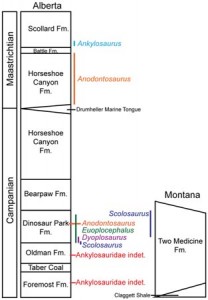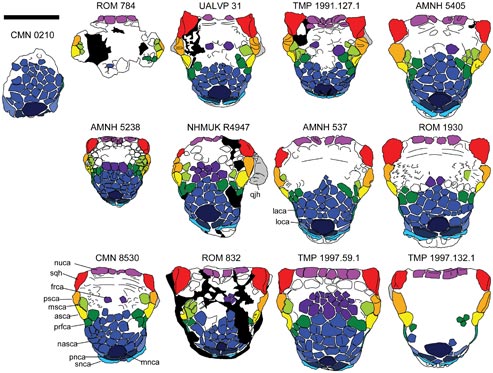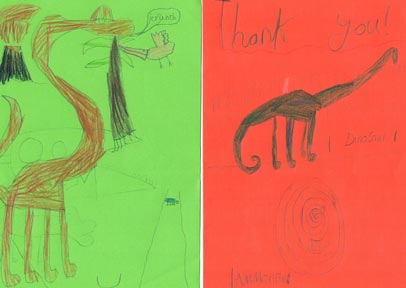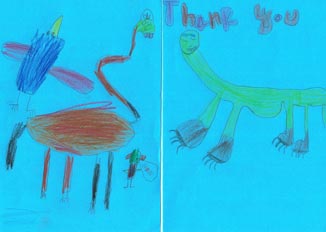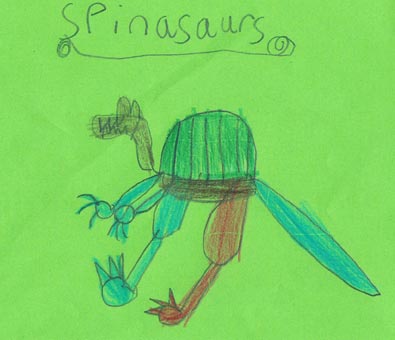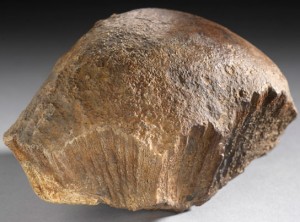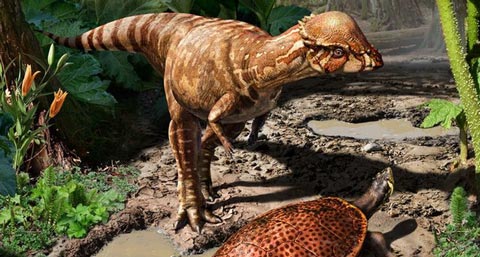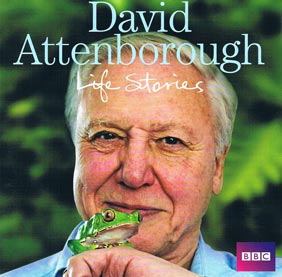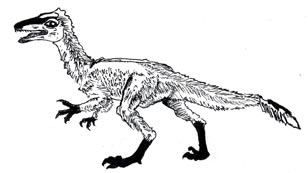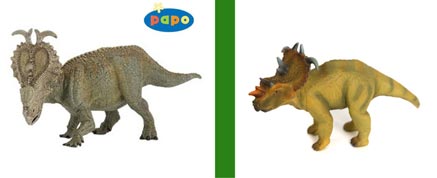When is a Euoplocephalus a Euoplocephalus?
Researcher Identifies That Fossils Ascribed to Euoplocephalus Actually Represent Different Species
The taxonomic classification of the ankylosaurids just got a whole lot more complicated, or to put it another way, a University of Alberta graduate researcher has reaffirmed analysis carried out in the early part of the 20th Century that proposed more species of armoured dinosaur in North America. It seems that fossils assigned to one species of ankylosaur, known as Euoplocephalus tutus may represent a total of four different species of armoured dinosaur.
Euoplocephalus tutus
Subtle differences noted by the student, originally identified by palaeontologists nearly one hundred years ago, suggest that the genera of Dyoplosaurus, Anodontosaurus and Scolosaurus may have to be resurrected. This leads to the intriguing question of why were there so many kinds of big, armoured dinosaur and how were some species able to live alongside each other in the same habitats?
The research has just been published in the scientific publication, “PLoS One”, the Public Library of Science.
Euoplocephalus Fossil Material
The ankylosaur group of dinosaurs are often referred to as “living tanks” as some members of this group of bird-hipped dinosaurs (ornithischians) were very wide-bodied, heavily armoured and possessed clubs on the end of their tails. As these types of ankylosaur are known from Upper Cretaceous sediments of North America and Asia it had been suggested that their defensive armour and vicious tail clubs evolved so that these slow moving creatures could withstand attack from the massive tyrannosaurids, which were the apex predators.
Indeed, most media images of creatures such as Ankylosaurus (A. magniventris) and the Chinese ankylosaur Shanxia (S. tianzhenensis) depict these squat, heavy reptiles defending themselves against an attack from a tyrannosaur by swinging their savage tail clubs. That may be the popular image of ankylosaurs, but the fossil record for these herbivores of the Late Cretaceous reveals that there may be a lot more to this clade of the Dinosauria, for example, one University of Alberta researcher has suggested that several different types of these giants could have lived in the same environment at the same time.
A Model of a Typical Ankylosaurid (A. magniventris)
Picture credit: Everything Dinosaur
The Thyreophorans
The ankylosaurs and the stegosaurs are grouped together into a sub-group of the Ornithischia known as thyreophorans (shield bearers). These dinosaurs are characterised by the presence of armour plates on the top and along the sides of their bodies. Late Cretaceous ankylosaurs like the eleven-metre-long A. magniventris had huge plates of armour on the neck and shoulders, with smaller plates running in rows along the flanks. The tail, stiffened by fused bony tendons posessed a massive, bony club on the end, in essence modified caudal vertebrae.
It was Franz Nopsca, back in 1915 who first suggested that these types of dinosaurs be classified into a sub-group, the Thyreophora, although he included the horned dinosaurs (ceratopsians) as well. Between 1900 and the early 1930s there was an extensive programme of dinosaur classification undertaken, partly due to the large number of new dinosaur fossils, including armoured dinosaurs being discovered in Canada and the western United States. A number of new ankylosaurid species were established most based on fragmentary fossils such as individual skull specimens and vertebrae.
Named by Lawrence Lambe
Euoplocephalus (E. tutus) , a species named by Lawrence Lambe in 1902 was an exception. This dinosaur is represented by a very much larger number of fossils than most other types of ankylosaurid. It is also unusual as fossils ascribed to Euoplocephalus have been found in the Dinosaur Park, Horseshoe Canyon and Two Medicine Formations. These Formations represent several million years of worth of geological deposits and this implies that the ankylosaur known as Euoplocephalus existed as a species for a very long time. Earlier studies from the 20th century assigned a number of genera to the fossils, dinosaur genera such as Scolosaurus (Scolosaurus cutleri), Anodontosaurus (A. lambe) and Dyoplosaurus (D. acutosquameus) were established.
Reviewed in the 1970s
Following a review in the 1970s, all these types of ankylosaur were reclassified as belonging to the Euoplocephalus genus. However, University of Alberta researcher, Victoria Arbour undertook a comprehensive review of the fossil material and her study suggests the 20th century scientists may have been right all along. She visited museum collections in North America and Europe and carefully examined small variations in the configuration of the skull armour and the bony tail clubs. Her analysis suggests that the fossils grouped together under the Euoplocephalus genus do actually constitute four individual species of dinosaur.
Arbour explained that:
“In the 1970s the earlier work was discarded and those four species were lumped into one called species Euoplocephalus. I examined many fossils and found I could group some fossils together because their skull armour corresponded with a particular shape of their tail club.”
Simplified Explanation of Differences between the Four Ankylosaurids
Table credit: Everything Dinosaur
The four species span a period of geological time of around ten million years from the Late Campanian faunal stage of the Cretaceous into the Maastrichtian and her research shows that the Dinosaur Provincial Park Formation had three different types of armoured ankylosaurid dinosaur living in that region of Alberta at the same time. Her work suggests that Scolosaurus, Dyoplosaurus and Euoplocephalus shared the same environment, if these very similar creatures lived in the same habitat it begs several questions such as how were the food resources divided up?
How did all three species manage to survive? How much interspecific competition would there have been?
Stratigraphic Distribution of Campanian-Maastrichtian Ankylosaurids in the Study
Table credit: Journal PLoS One
Ankylosaur Tail Clubs
Previously, Victoria had examined ankylosaur tail clubs with a view to understanding how they might have been used as defensive weapons, to read an article about her earlier research: Ankylosaurs had a Smashing Time.
This also has implications for the fossil material that remains ascribed to Euoplocephalus. The re-division of the Euoplocephalus fossil material into four species means that there was not the degree of individual variation in the Euoplocephalus tutus species as once thought.
Skulls of Ankylosaurids Compared (Dorsal View – looking at the tops of the skull)
Picture credit: Journal PLoS One
Euoplocephalus Fossil Material Studied
There has been much debate between palaeontologists as to how to distinguish A. magniventris fossil material with that ascribed to E. tutus. The re-classification of a significant portion of the Euoplocephlus material to other species may muddy the waters somewhat further. Although, E. tutus material is still substantial and it remains one of the more complete ankylosaurid genera in terms of the number of fossils known, Arbour’s research now leaves no specimen of Euoplocephalus that includes bony armour “in situ” in relation to other skeletal material. In short, the arrangement of the armour (osteoderms) on Euoplocephalus is now very much open to question.
Ornamentation Patterns on the Tops of Ankylosaurid Skulls Compared
Picture credit: Journal PLoS One
The picture above shows a number of the skulls that were analysed in the study (dorsal view, viewed from the top). The skull marked as CMN 0210 is the holotype for Euoplocephalus tutus (top left), CMN 8530 is the holotype material associated with Anodontosaurus lambei (bottom row on left) and ROM 784 is the holotype for Dyoplosaurus acutosquameus, adjacent to the Euoplocephalus holotype.
It seems there is a lot more to learn about when it comes to these heavily armoured dinosaurs commonly referred to as “living tanks”.
For models and replicas of thyreaphorans and other dinosaurs: PNSO Age of Dinosaurs Models.




